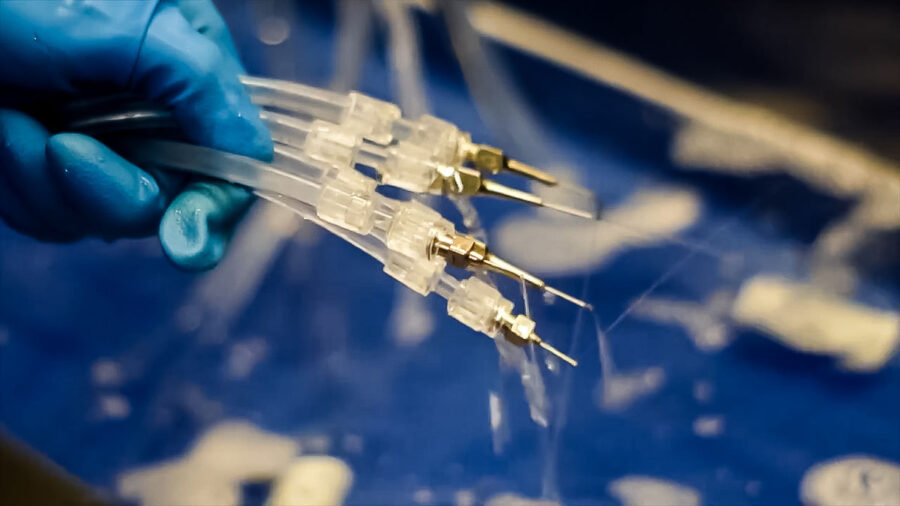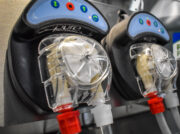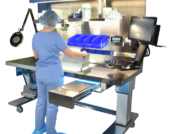
The Three Pillars of Effective Lumened Instrument Cleaning
Instrument reprocessing technology has come a long way, with many advancements to make reprocessing more efficient, effective, and ultimately serve patients with the highest quality care. But the basics of instrument cleaning haven’t changed. There are no substitutes for highly effective manual cleaning in the decontamination room.
Three core pillars support highly effective lumened instrument cleaning outcomes:
- Proper and effective use of cleaning chemistries
- Effective brushing
- Copious amounts of fluid under pressure
Note that automated cleaning with ultrasonic systems and washer-disinfectors is partnered with effective manual cleaning at the decontamination sink. Automated cleaning is not a replacement for manual cleaning. Many IFU for ultrasonics, automated systems, or instrumentation call for the pre-flushing and brushing of channels before reprocessing. If manual cleaning is done poorly at the reprocessing sink, the steps following will be compromised.
1. Proper and effective use of cleaning chemistries
Instrument reprocessing professionals are being asked to deal with human bioburden, so the tools and chemistries used should reflect the unique biology and make-up of that debris. Proteins, fats, and other complex molecules require unique chemicals for effective cleaning.
Consult your instrument IFU to determine what cleaning chemistries are required. Enzymatic detergents are often called to help break down complex molecules and make removal easier, as they are formulated with human bioburden in mind. And if chemistries are being called to be used, make sure there are tools in place to monitor dilution rates, contact times, and temperature ranges when applicable.
Effective use of chemistries is especially important when pre-treatment in OR procedure rooms is not being properly followed. Lack of pre-treatment may adhere bioburden to lumens and require extra soaking and breakdown for proper removal. Chemistries can aid in that process.
2. Effective brushing for instrument lumens
Brushing channels is the physical component of effective cleaning. Putting in the elbow grease to remove stuck-on, stubborn, or dried bioburden is important when flushing or soaking hasn’t properly removed that matter.
Brushes aren’t a one-size-fits-all solution. Consult your instrument IFU, and consider the following:
- Do I have brushes that are the right size for all my lumens?
- Am I using the right quality of material for my lumens?
- Do I have brushes for cleaning all instrument components, such as valves, distal tips, and channels?
- Am I cleaning and/or replacing brushes appropriately?
All those questions answer if brushing is effectively cleaning internal lumens.
3. Copious amounts of fluid under pressure for instrument channels
Loosening and removing bioburden wouldn’t be effective if not partnered with flushing. Flushing channels with fluids that are pressurized is the final component to effective manual cleaning.
How can chemistries be flushed into long, narrow channels? How can fragments of bioburden be removed from channels if they don’t remove on the brush? Flushing is important for removing residual chemistries and bioburden and preparing instruments for automated manual cleaning. 
It’s also important to note that pressure should be applied appropriately to the channel size. An ophthalmic lumen cannot be flushed with the same pressure as an orthopedic shaver. Flushing methods, therefore, should be flexible for a wide variety of lumen qualities and sizes.
With those three pillars in mind, technicians, nurses, and managers can audit and enhance their existing practices while potentially improving outcomes.
For more information on effective manual cleaning practice, check out our free, 1 CE and CBSPD credited program, A Royal Flush: Your Winning Hand for Pre-Cleaning Protocol.
Looking to upgrade from your syringes and spray guns which can be difficult to monitor and standardize during lumen flushing? The FlexiPump Independent Flushing System can flush up to three lumens at once and meet a variety of IFU with hands-free flushing.
Is there a problem your department needs to solve? Let us know!




